Why Iranian Saffron Is the Best in the World
Introduction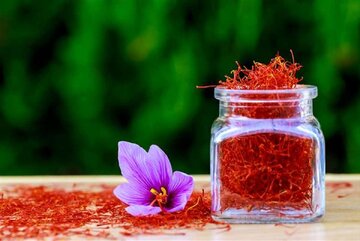
Often called “red gold,” saffron has captured human imagination—and palates—for millennia. While several countries cultivate this precious spice, Iran produces more than 90% of the world’s saffron, earning a reputation for superiority in color, flavor, aroma, and potency. Yet behind this global dominance lie centuries of agricultural expertise, ideal climate and soil conditions, artisanal harvest methods, rigorous quality control, and an unwavering commitment to authenticity. This comprehensive article, explores every facet of Iranian saffron’s excellence, from its storied past and optimal terroir to biochemical composition, health benefits, culinary versatility, sustainable practices, and market leadership. Finally, we highlight why sourcing through Royal Azin delivers unmatched value and trust for international buyers.
1. Ancient Origins and Cultural Heritage
1.1 Historical Roots in Persia
Saffron’s documented history traces back over 3,000 years to ancient Persia (modern-day Iran), where it adorned royalty’s banquets, perfumed temples, and featured in medicinal manuscripts. References in Achaemenid texts and archaeological evidence—such as wall paintings at the Burnt City (Shahr-e Sukhteh, circa 1800 BCE)—attest to saffron’s enduring significance. This deep-rooted tradition has established a cultural reverence for saffron cultivation and use.
1.2 Traditional Knowledge Transmission
From Makran’s farmers to Khorasan’s cultivators, saffron-growing communities have passed down specialized knowledge through generations: when to plant corms, harvest under the cool dawn light, and dry threads to maximize quality. Local festivals—like Iran’s annual Saffron Festival in Torbat-e Heydarieh—celebrate this heritage, reinforce farming best practices, and strengthen communal bonds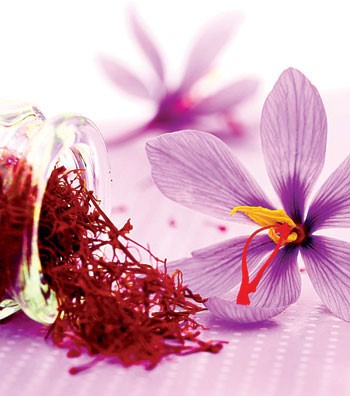 .
.
2. Natural Terroir: Climate, Soil, and Environment
2.1 Optimal Climate Conditions
Iran’s northeastern provinces, particularly Khorasan Razavi, experience hot, arid summers and cold winters. The stark temperature differential (often exceeding 25°C between summer highs and winter lows) stresses Crocus sativus plants, promoting concentrated synthesis of crocin, picrocrocin, and safranal.
2.2 Soil Characteristics
Well-drained calcareous soils rich in calcium carbonate, low in organic matter but alkaline (pH 7.5–8.5), force saffron corms to develop deep, resilient root systems. This mild water stress further concentrates flavor and color compounds in the stigmas.
2.3 Altitude and Sunlight Exposure
Fields situated between 1,200 and 1,700 meters above sea level receive intense ultraviolet radiation and ample sunlight, stimulating secondary metabolite production—key for vivid hue and potent aroma.
2.4 Irrigation and Water Management
Traditional flood irrigation has gradually shifted to drip systems in many farms, precisely regulating moisture, minimizing fungal risk, and preserving soil structure. Yet the limited water availability in arid regions ensures corms undergo periodic mild drought stress—beneficial for quality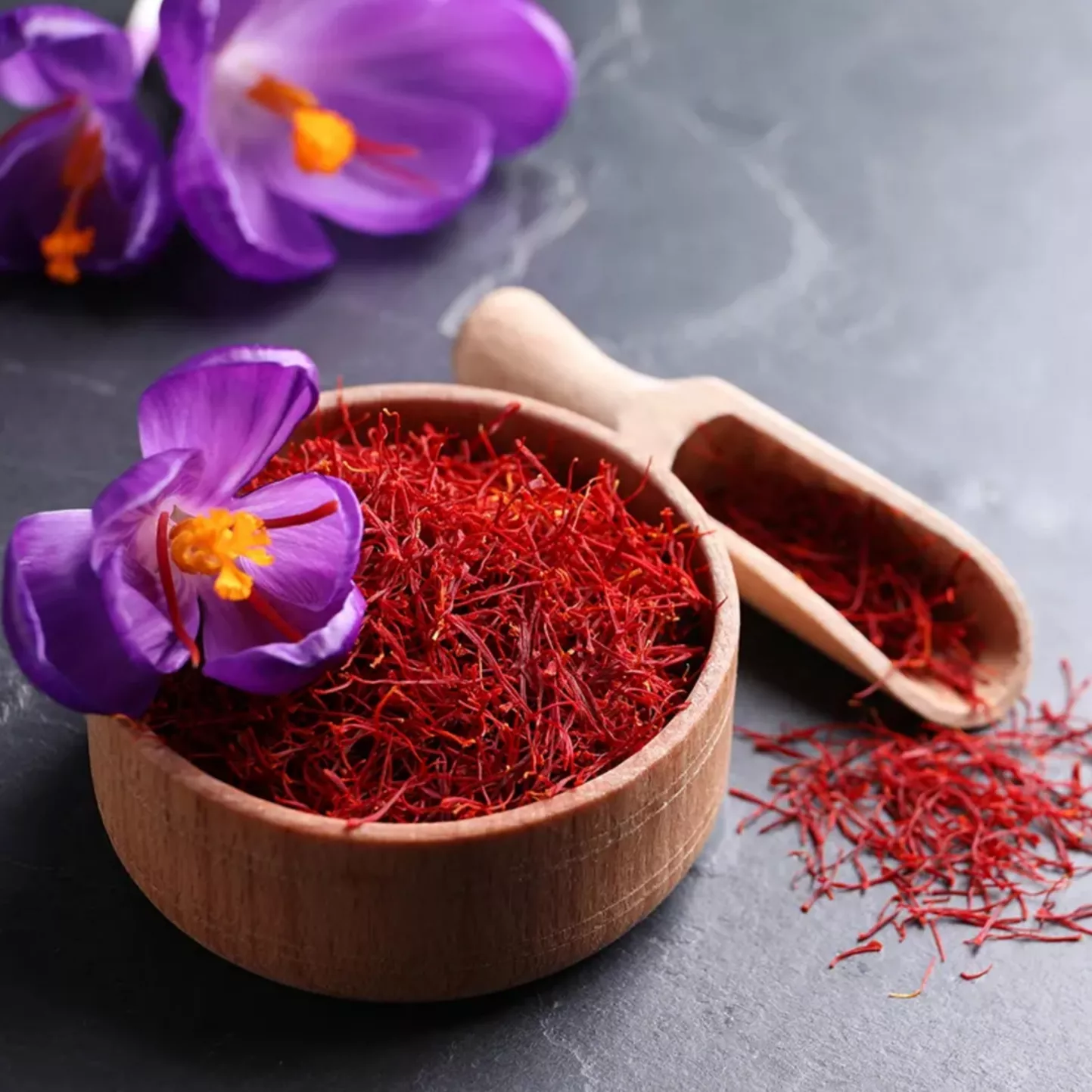 .
.
3. Cultivation Practices: From Corm to Bloom
3.1 Corm Propagation and Selection
High-quality saffron begins with healthy corms. Farmers select mature mother corms (weight around 25–30 grams) each summer, discarding small or diseased bulbs. Research shows corm size correlates with flower yield, making rigorous corm grading essential.
3.2 Planting Techniques and Seasonality
Corms are planted between late June and early August. Uniform planting depth (10–15 cm) and spacing (10 cm between corms, 20–25 cm between rows) enable balanced canopy growth and optimal flowering in autumn (late October to early November).
3.3 Pest, Disease, and Weed Management
Geographical isolation limits many pests, but farmers remain vigilant against bulb rot pathogens (e.g., Fusarium spp.) and weeds like Salsola and Chenopodium species, which compete for moisture. Integrated pest management—crop rotation, resistant corm clones, and minimal, targeted fungicide use—maintains plant health and organic compliance in many estates.
4. Artisanal Harvest and Processing Techniques
4.1 Timing: The Pre-Dawn Harvest Window
Saffron flowers open in the cool pre-dawn hours and close by midday. Harvesting between 5:00 and 8:30 AM preserves volatile compounds. Family teams work swiftly, harvesting by hand to avoid damage and oxiation.
4.2 Stigma Separation under Hygienic Conditions
Back in shaded processing sheds, workers meticulously separate the three red stigmas from the yellow styles using fine tweezers, ensuring no debris. This manual precision maintains thread integrity, absence of foreign matter, and uniformity.
4.3 Drying Methods: Sun vs. Controlled Heat
Traditional sun-drying on bamboo trays yields threads with robust color but can risk overexposure. Modern facilities use controlled ovens (45–55°C) or electric dehydrators under clean-room conditions. The goal: moisture content below 10%, locking in crocin and picrocrocin.
4.4 Packaging for Preservation
Vacuum-sealed, food-grade aluminum foil bags with moisture absorbers protect saffron threads from light, humidity, and oxidation. For export, cartons comply with phytosanitary and ISO packaging standards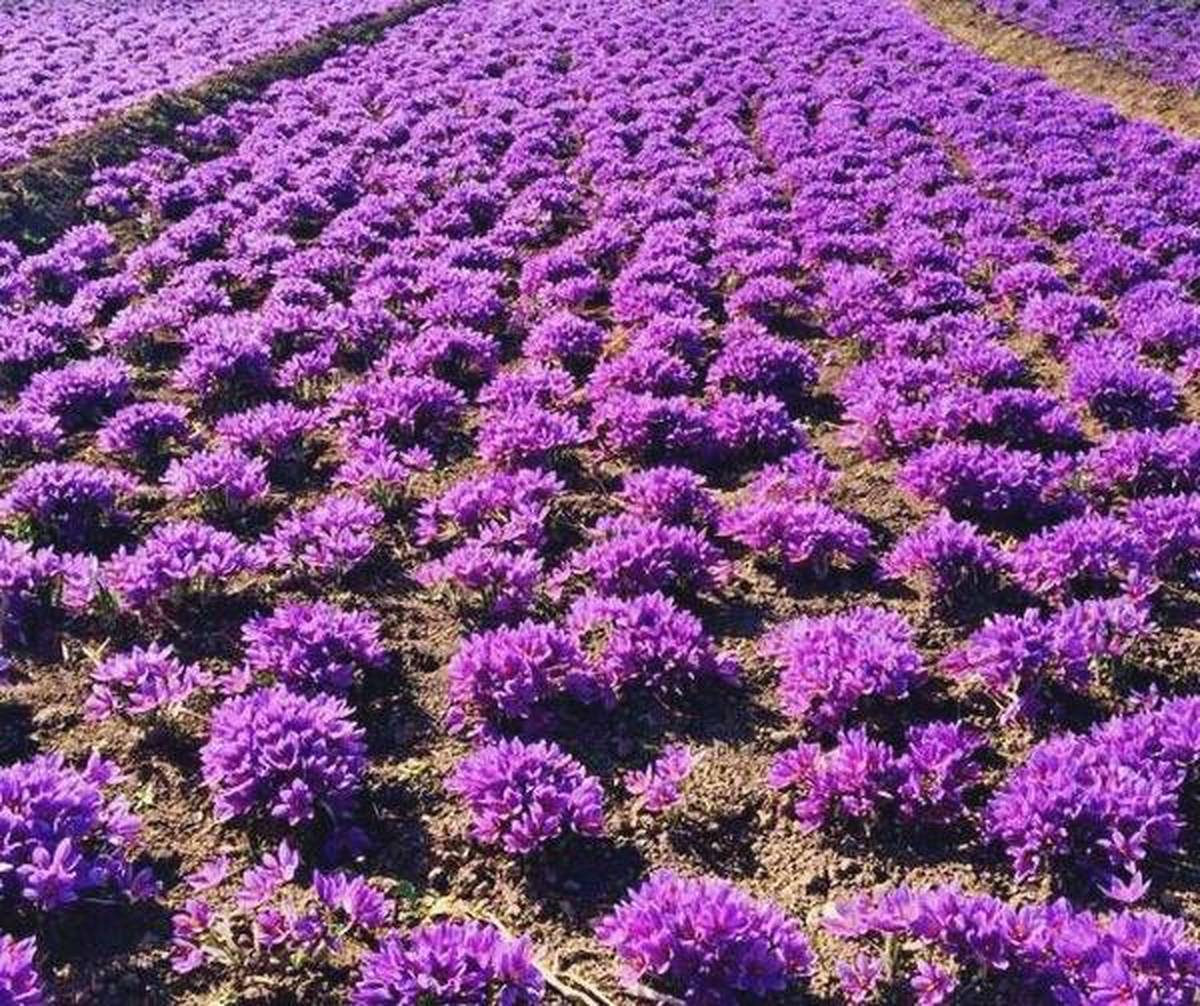 .
.
5. Biochemical Superiority: The Science of Quality
5.1 Key Compounds and Health Implications
- Crocin: A carotenoid glycoside responsible for saffron’s golden-red color and antioxidant properties. Premium Iranian saffron exhibits crocin concentrations of 200–300 nm (absorbance units), surpassing the ISO 3632 category I threshold of 200 nm.
- Picrocrocin: A monoterpene glycoside imparting the characteristic bitter taste. Top grades contain 80–120 absorbance units, ensuring robust flavor in culinary applications.
- Safranal: A volatile compound creating saffron’s distinctive aroma. Premium threads yield 50–80 absorbance units of safranal, measured via gas chromatography.
5.2 ISO Standards and National Grading
According to ISO 3632, saffron is graded into categories I (highest) through IV (food additive). Iranian national standards further classify threads into Sargol, Pushal, Negin, and Super Negin, based on stigma length, color uniformity, and absence of style.
5.3 Comparative Analysis with Competitors
Independent laboratory tests show Iranian samples outperform those from Spain, India, and Afghanistan in crocin and picrocrocin levels, thread length, and uniform redness—critical markers of potency and purity.
6. Culinary Applications: The Spice of Gastronomy
6.1 Iconic Persian Dishes
- Chelo-Kabab: Saffron-infused basmati rice, layered with threads at every steaming interval.
- Tahdig: Crispy rice crust colored golden by saffron stock poured beneath.
- Sholeh Zard: Saffron rice pudding decorated with pistachio and rosewater.
6.2 International Cuisine
- Paella Valenciana: Spanish rice dish relying on saffron’s hue and aroma.
- Risotto Milanese: Italian risotto adopting saffron’s golden color.
- Bouillabaisse: French seafood stew with saffron-infused broth.
6.3 Beverages and Confectionery
Saffron elevates tea blends, lattes, gelato, and artisanal chocolates. Its antioxidant profile and delicate aroma appeal to modern health-focused consumers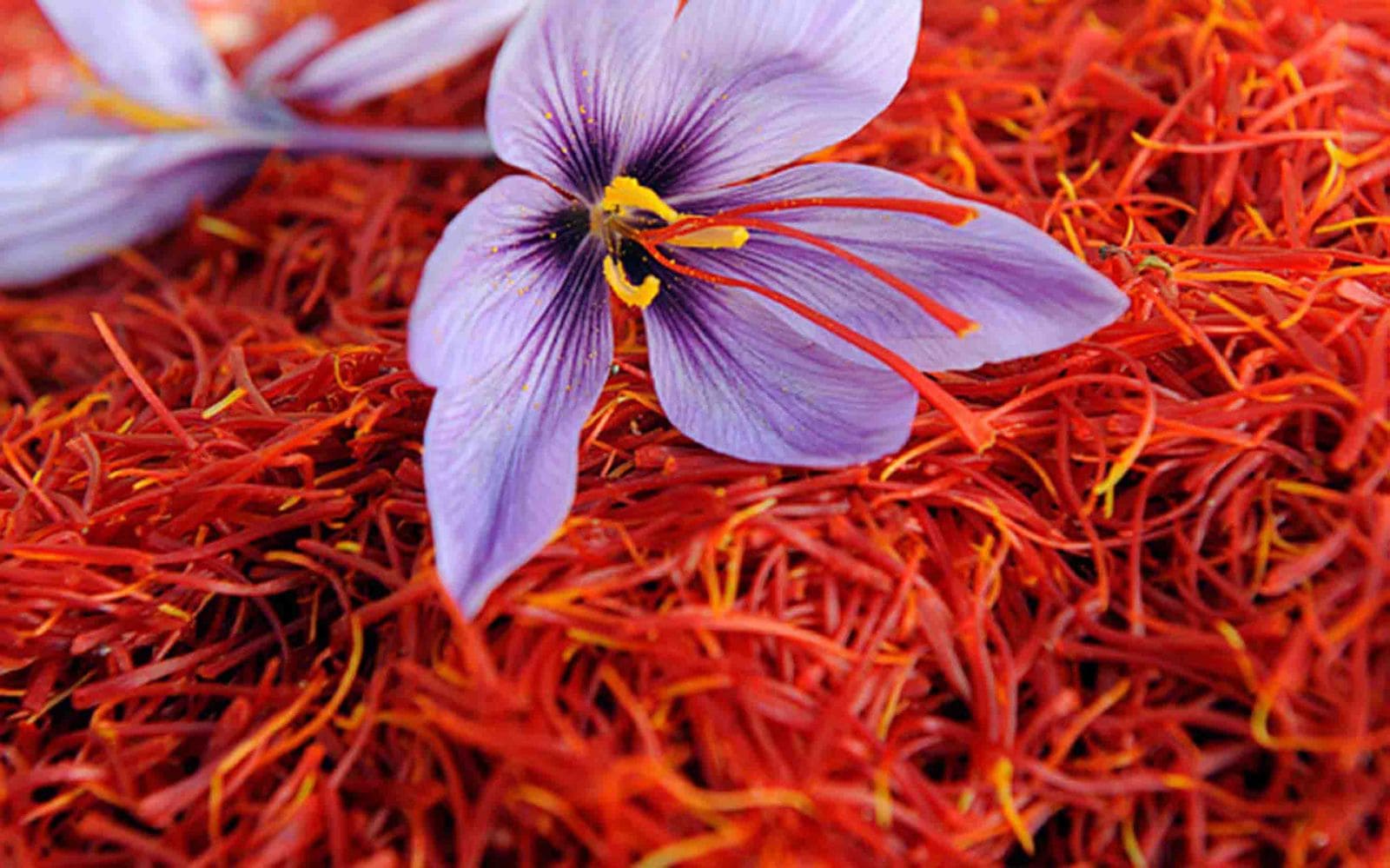 .
.
7. Health Benefits and Nutraceutical Potential
7.1 Antioxidant and Anti-inflammatory Effects
Crocin and safranal scavenge free radicals, reducing oxidative stress linked to cardiovascular disease and aging.
7.2 Mood Enhancement and Cognitive Support
Clinical trials indicate saffron extract (30 mg/day) alleviates mild-to-moderate depression, likely via modulation of serotonin pathways.
7.3 Eye Health and Vision Protection
Crocin protects retinal cells; studies suggest daily saffron supplementation preserves macular health in early age-related macular degeneration.
7.4 Digestive and Metabolic Health
Traditional Persian medicine attributes digestive stimulation and appetite regulation to saffron, now supported by research on picrocrocin’s effects on gut motility.
8. Sustainability and Social Impact
8.1 Empowering Rural Communities
Saffron cultivation generates significant seasonal employment for thousands of families, especially women and youth, in underdeveloped areas.
8.2 Organic and Fair-Trade Practices
Growing consumer demand for organic saffron has spurred certified farms eliminating synthetic inputs, boosting rural incomes and environmental stewardship.
8.3 Water Conservation and Climate Adaptation
Innovations like drip irrigation, corm storage techniques, and shade nets help farmers adapt to changing rainfall patterns while preserving scarce water resources.
9. Global Trade Dynamics and Market Leadership
9.1 Export Statistics and Pricing Trends
Iran exports over 300 tons of saffron annually, commanding premium prices ($1,500–$3,000 per kilogram for top grades), reflecting its unrivaled quality and scarcity.
9.2 Competitive Landscape
While Spain, India (Kashmir), and Afghanistan produce niche saffron, none match Iran’s scale or consistency. Emerging producers in Central Asia experiment with cultivation but face climatic and experience barriers.
9.3 Quality Assurance and Anti-Adulteration Measures
Iranian exporters increasingly employ DNA barcoding, isotope ratio analysis, and spectroscopic fingerprinting to authenticate origin and detect adulterants—maintaining market confidence .
.
10. Why Source from Royal Azin
As a premier exporter of Iranian agricultural products, Royal Azin offers:
- Direct Cooperative Partnerships: We work closely with award-winning farms in Khorasan to secure first-hand access to the freshest harvests.
- Certified Laboratory Testing: Every batch undergoes ISO 3632 spectrophotometric analysis and independent lab certification for crocin, picrocrocin, and safranal levels.
- Ethical and Sustainable Practices: Royal Azin supports organic cultivation, fair wages, and water-conserving techniques, ensuring a positive social and environmental impact.
- End-to-End Traceability: From corm origin to final packaging, full digital traceability guarantees authenticity and lot-level recall capability.
- Competitive Pricing & Logistics: Our streamlined supply chain and partnerships with reliable freight forwarders deliver cost-effective CIF and FOB solutions worldwide.
- Dedicated Customer Support: Our multilingual export team provides guidance on customs, compliance, and culinary application to maximize buyer success.
Conclusion
Iranian saffron’s unmatched prestige is no accident; it arises from millennia of cultivation wisdom, ideal environmental conditions, artisanal harvest and processing, rigorous scientific grading, and sustainable community-driven practices. Its extraordinary biochemical profile endows vibrant color, rich flavor, and powerful health benefits. By partnering with Royal Azin—your trusted source for certified, traceable Iranian saffron—you secure not only the finest spice on earth but also contribute to the prosperity of rural farming communities and the preservation of a treasured cultural heritage.
References
- Abbasi, S., et al. (2023). Terroir Effects on Saffron Quality in Khorasan. Journal of Agricultural Science.
- Farahmand, H. & Yazdani, M. (2022). Post-harvest Processing Techniques for Saffron. International Journal of Postharvest Technology.
- ISO (2021). ISO 3632: Saffron (Crocus sativus) Specification and Test Methods. International Organization for Standardization.
- Hosseini, M., et al. (2020). The Nutraceutical Potential of Saffron: A Review. Nutrients.
- Iran Ministry of Agriculture (2024). National Statistics of Saffron Production. Government of Iran.
- Royal Azin Ghoomes. (2025). Annual Export Report and Quality Assurance Protocols. Royal Azin Ghoomes Publications.
- Torbat-e Heydarieh Saffron Festival (2023). Cultural and Economic Impact Report. Municipality of Torbat-e Heydarieh.



Write your comment.